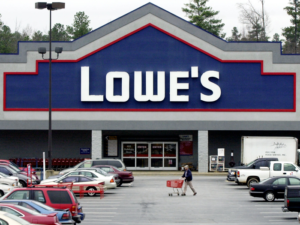
“The four P’s of marketing are four main factors that marketers consider to determine the best way to promote their product. The four P’s stand for product, price, Place, and Promotion.”
You may have heard that four p’s of marketing are product, price, Place and Promotion. You may be wondering if four P’s still apply in the year 2022. The answer is yes! Four P’s have been around for a long time and will continue to be used in the future. This article will explain what four p’s means within marketing strategy and how four p’s work together to help your business grow.
Jump Ahead To :
What are the Four P’s ?
First of all, what are four p’s? Four p’s stand for four marketing activities which marketers use to sell their products. The 4p’s include product, price, Place and Promotion. All four elements must be coordinated together to create a successful marketing campaign to help you achieve your business goals. Each part must work well with another because if one element does not work, then the whole process might fail.
Marketing has been used since ancient times, but people have recently tried developing different techniques through social media campaigns to promote and sell products and services. Marketers use four p’s to help them sell their product or service because it helps focus on the four crucial elements that must be present for a successful marketing campaign. Without one of the four p’s, marketers will not succeed no matter how hard they try.
Marketing is an essential part of any business operation. Without marketing, you cannot reach your targeted audience and potential clients who might need your service or buy from you, so understanding four p’s and using each element effectively is vital if you want to increase sales and revenue through your company a large company or small business.
Four P’s Of Marketing Explained
Here we will discuss four p’s in detail and how each part plays an important role in successfully marketing your product or service.
Understanding four p’s will help you become a more professional marketer. This is one of the most crucial parts of every campaign, so by having good knowledge about four p’s, you can avoid any mistakes that might cost your business time and money the line. If four p’s are not used correctly, then even if all other factors have been taken care of, such as correct target audience mindset and product quality, four p’s might not be used to their full potential, which could lead to the failure of the campaign.
#1: Place

Place is also known as a distribution which refers to how a business will deliver its products or service to customers. Place mainly includes advertising channels such as TV commercials, magazines and online ads. Still, it can also involve other factors, such as where your business operates from, including rent prices and the workforce’s availability.
In addition, a place in the 4p’s of marketing is a place where your product or service can be found. It includes location, distribution channels and sales outlets. The place you choose will depend on your type of business and customer base.
In terms of place, many businesses have been moving from place-based to people-based strategies because they recognize that their customers are no longer limited by physical boundaries when choosing products and services (Marketing Teacher).
For example, suppose someone sells car parts online. In that case, this may not include shipping outside of Australia, so that they might operate solely within Australia, including all major cities such as Sydney, Brisbane etc. However, some other companies selling similar car parts could offer international shipping depending on what place they are targeting.
Several place strategies can be considered depending on your industry and customers’ preferences. For example, online-only sales outlets or retail stores may work well locally but not internationally. In contrast, e-commerce with warehouses in different parts of the world might meet both needs (Marketing Teacher).
However, the place becomes more complex when talking about B to C business because it includes many aspects such as production, supply chain management etc.
#2: Price

Price is known as cost, and it refers to how much money you will charge for your product or service. This part of four p’s is one of the most important because if a person feels that your price does not match quality, they might not buy from you no matter how good four p’s are in place, such as having great customer service satisfaction and delivering on time. So before setting up prices, businesses must consider several factors such as production costs, past sales performance etc., when deciding upon pricing strategy. It is important to note that four p’s of marketing are closely related, so changing one part might have a knock-on effect for the other three parts.
Price is the amount of money a consumer needs to pay for your product or service. Price includes both costs and benefits, which can be broken down into hard costs (the price tag) and perceived value (customer perception on return). Price also plays an important role in how firm’s position themselves competitively with other firms within their industry.
Price strategy has different levels such as market penetration pricing where you lower prices to sell more volume than competitors; new entrants – enter low while gaining customers, etc. price also plays a key role in customer satisfaction when making purchasing decisions based upon quality v/s quantity benefit-cost analysis: do I get enough advantages from this purchase?
A smart trick is people who are unfamiliar with your business tend to equate price with quality. Price should always be secondary or after benefits and features, not before. Price can also indicate your brand image as an affordable place for everyone to shop at instead of being expensive only to the elite few who have money to spend on luxury items. Price is often associated with value – do you get what you pay for?
#3: Product

Product refers to the actual product or service being sold, and it is known as “what” people will buy from your business. The product can include physical goods, but these days, more than ever before, products also refer to digital goods such as apps and software. The four p’s of marketing must be used in conjunction with one another to ensure that customers will purchase your product if you have all four parts. Still, they are not working together, so it is likely that the campaign might fail, so four p’s need to work hand-in-hand with each other for a successful result.
Furthermore, the product of the four p’s is what you are selling to your potential customers. The Product section includes how well a product satisfies customer needs and if it is considered unique or an undifferentiated product.
When considering the product in marketing, one must think carefully about what they want their business to achieve and whether there is space within that particular industry. They should also consider where their products stand on price and quality because standing out from the competition can help increase sales.
In some cases having a more expensive but superior product may be worth investing in, whereas other times, companies choose to sell at lower prices with fewer features to have an advantage over others who might not afford such high costs. Product is an important area to focus on when considering the product in the four p’s of marketing.
Every business will have one or more product (s) that they are offering their customers. You should consider carefully with all product areas in mind so your product can be as successful as possible for your company.
A Product can be a tangible object or intangible service. It is all of the features and benefits that a customer receives from purchasing your business’s product (s).
In addition to considering the product in marketing, you should also think about what Product management involves as it will require an important role for success. In short, Product Management is responsible for determining which types of products are most profitable for the company and deciding how new products should meet customers’ needs, so they remain competitive with others on the market. For example, Apple has successfully made its product stand out from competitors by adding incredible design aspects such as having a touch screen across almost all devices.
In contrast, other companies tried to keep product costs down by using buttons. Product Management is a vital role to consider when figuring out a product in the four p’s of marketing. You must ensure your product can remain profitable and competitive with others on the market for success.
#4: Promotion

Promotion refers to how four p’s will be communicated to your target audience. Promotion plays a huge role in four p’s as without Promotion nothing else can work properly. Hence, businesses must understand this part of the four p’s because if they fail to promote their product or service, the other three parts might not impact no matter how good they are.
Promotion includes branding activities like name, logo, slogan or jingle, which are used to build awareness about a product. It also involves various other methods like sponsoring events etc. These methods make customers aware of the brand and its products through media advertisements on print media (newspaper ads), Electronic Media (TV advertisements), radio advertisement; outdoor hoardings; banners; signboards where ever required.
Customers should be aware that something new is coming out soon before it does, so they get excited to try it after it comes into the market because people have been talking about this for a long time now! So any Promotion you can think of is a Promotion. The Promotion also includes Public Relations (PR), which helps build the brand image and win customer trust, generating positive news about a product or service to win customers’ confidence, company products, etc.
Sales promotion activities are promotional activities that directly influence sales volume/quantity by temporarily modifying price-related or non-price related factors affecting buyer behaviour like offering discounts at the point of purchase for immediate sale, giving gifts with purchase etc. Promotions can be done through social media sites like Facebook, where you get free coupons if someone likes your page! This makes people aware of what’s new on their way before it comes out, so they’re excited when it’s finally here because everyone has been talking about this one! So Promotion is advertising, public relations and sales.
Importance of The Four P’s Of Marketing
These four things can be used in many different ways to help increase sales. When you sell a product, the four p’s affect all aspects of selling. The four p’s provide structure for the marketer when they decide how to sell their products or services.
These four elements play off each other, so it is important not to mix them up when planning your strategy as they will work together instead of against each other like some people might think! In this blog post, we go through what all these key points mean and why including them into your strategies mean success for any business that use them effectively!
Conclusion
It is important to have all four elements work together for your marketing campaign to be successful. Without the right product, price, promotion and placement, you will not get any sales. Your customers are looking for a service or product that meets their needs at an affordable price with promotions they can use when buying it. The 4p’s make up good marketing campaigns, so if one of them does not fit well, then there might be issues throughout the process. You should always go into these things knowing that everything has to come together for it to succeed!






